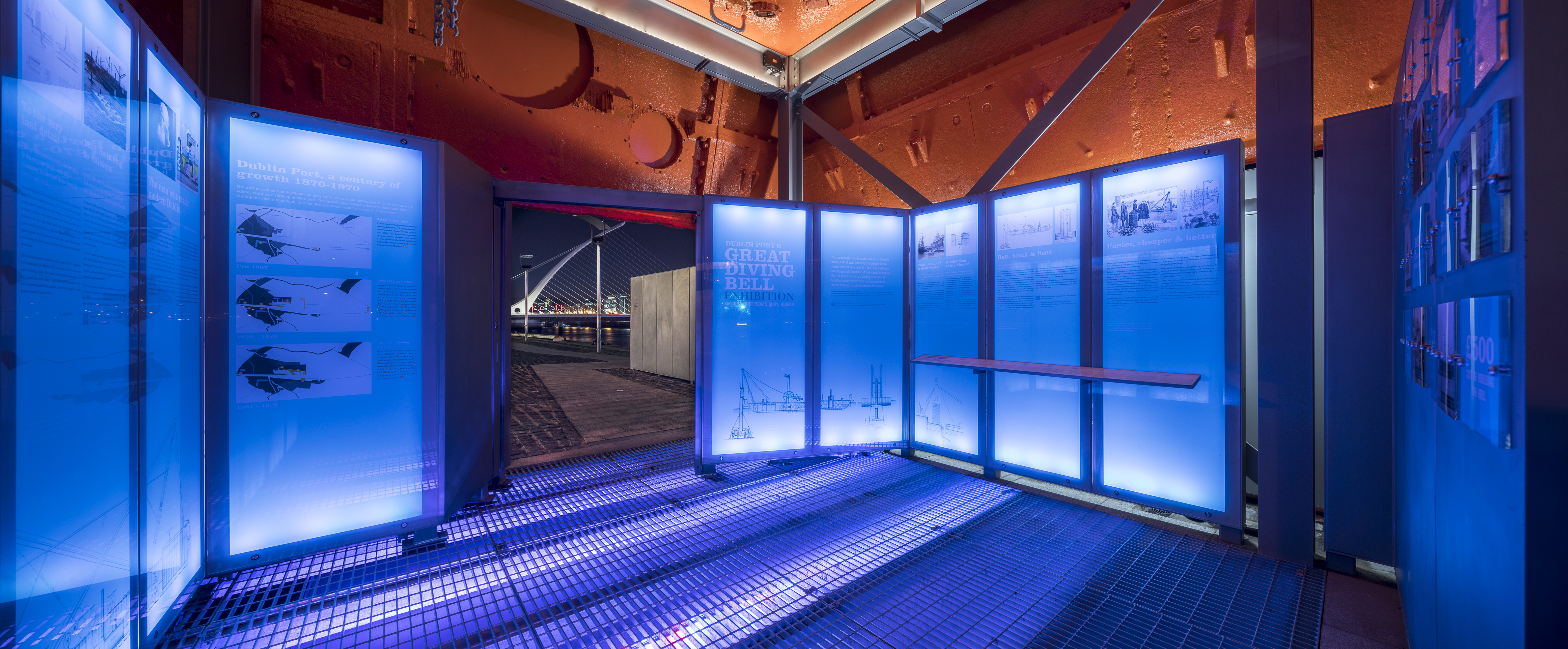The Diving Bell used in the building of the Port’s quay walls from the Victorian era right up until almost the 1960s is a remarkable feat of Irish engineering, Designed by the port engineer Bindon Blood Stoney (1828 to 1907) and built by Grendon and Co., Drogheda. it was delivered to Dublin Port in 1866, entered service in 1871, and was used in the building of the Port’s quay walls until 1958. Stoney was a prodigious engineer and among his achievements was the building of the Boyne Viaduct in Drogheda, the construction of O’Connell Bridge, and the building of many of the Port’s quay walls including Sir John Rogerson’s Quay and North Wall Quay Extension. It was a ground-breaking piece of engineering innovation in its day.
Hear the sounds of working in the Diving Bell
Watch British Pathé news film of the 1922 caisson launch
Animation of the Diving Bell in Operation – ESRAS Films
The restoration of the Diving Bell is the first project in Dublin Port’s plan to create a ‘distributed museum’ of attractions across the Dublin docklands and into Dublin Port to preserve the port’s industrial heritage and history.The project elevated the 13m tall, 90 tonne Diving Bell onto a two metre steel structure, creating a ramped public access route underneath. A water feature was installed beneath the structure accompanied by a series of interpretative panels explaining the historical, social and engineering significance of the Diving Bell. The new exhibition is illuminated at night time using energy efficient LED lighting.
RTE Interview with Dublin Port Shipwrights – courtesy RTE Archive
The Diving Bell’s lower section was hollow and bottomless, providing just enough room for six men to work at a time. Once lowered into position on the riverbed, the crew entered through an access funnel from the surface and compressed air was fed in from an adjacent barge. The men inside the bell worked on the river bed exposed at their feet, excavating the site where a massive concrete block would later go; all the excavated soil was stashed in trays hanging inside the bell, and brought up when the bell was lifted.

